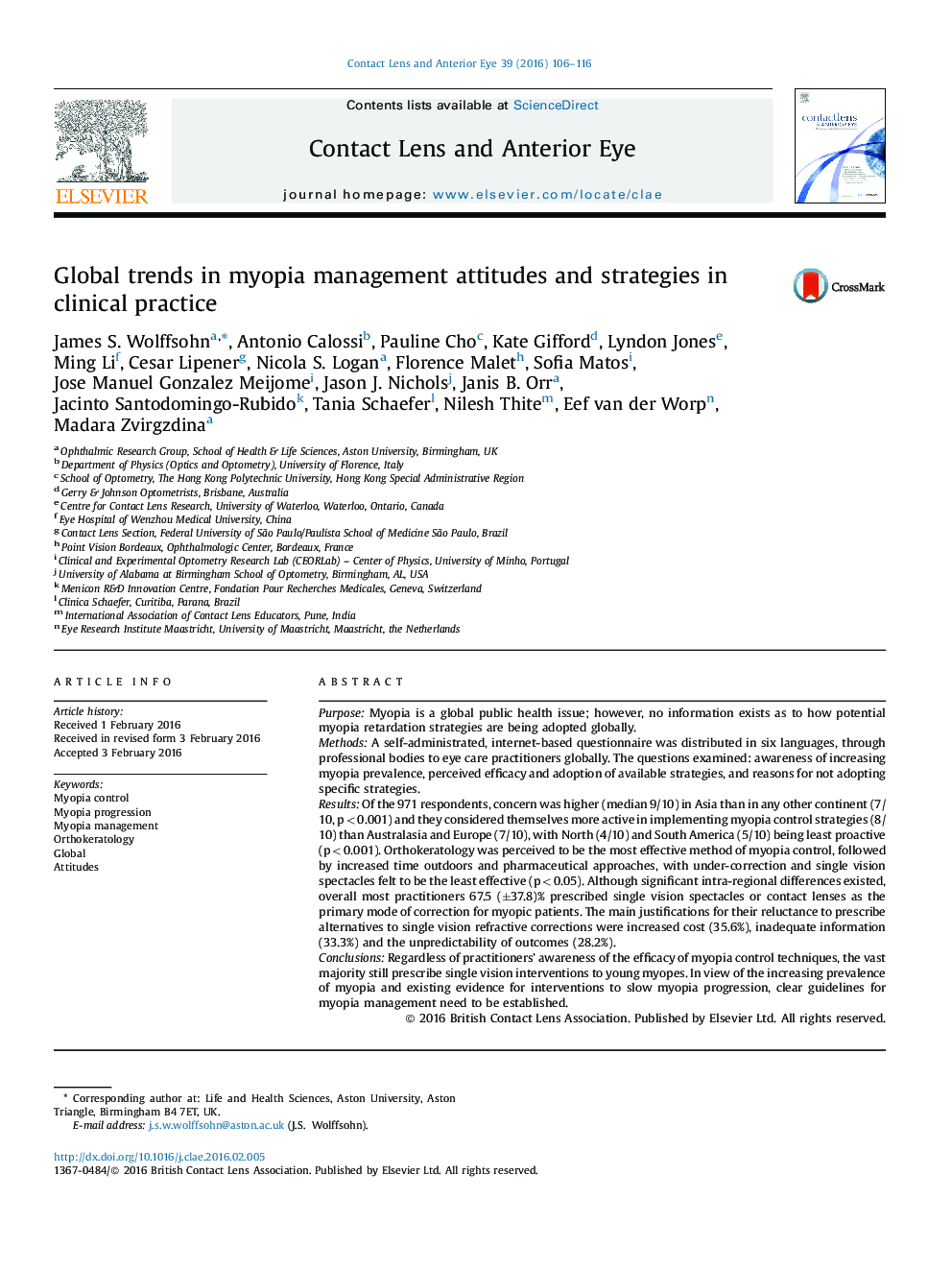| Article ID | Journal | Published Year | Pages | File Type |
|---|---|---|---|---|
| 2692900 | Contact Lens and Anterior Eye | 2016 | 11 Pages |
PurposeMyopia is a global public health issue; however, no information exists as to how potential myopia retardation strategies are being adopted globally.MethodsA self-administrated, internet-based questionnaire was distributed in six languages, through professional bodies to eye care practitioners globally. The questions examined: awareness of increasing myopia prevalence, perceived efficacy and adoption of available strategies, and reasons for not adopting specific strategies.ResultsOf the 971 respondents, concern was higher (median 9/10) in Asia than in any other continent (7/10, p < 0.001) and they considered themselves more active in implementing myopia control strategies (8/10) than Australasia and Europe (7/10), with North (4/10) and South America (5/10) being least proactive (p < 0.001). Orthokeratology was perceived to be the most effective method of myopia control, followed by increased time outdoors and pharmaceutical approaches, with under-correction and single vision spectacles felt to be the least effective (p < 0.05). Although significant intra-regional differences existed, overall most practitioners 67.5 (±37.8)% prescribed single vision spectacles or contact lenses as the primary mode of correction for myopic patients. The main justifications for their reluctance to prescribe alternatives to single vision refractive corrections were increased cost (35.6%), inadequate information (33.3%) and the unpredictability of outcomes (28.2%).ConclusionsRegardless of practitioners’ awareness of the efficacy of myopia control techniques, the vast majority still prescribe single vision interventions to young myopes. In view of the increasing prevalence of myopia and existing evidence for interventions to slow myopia progression, clear guidelines for myopia management need to be established.
